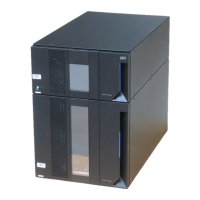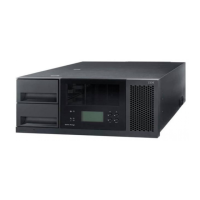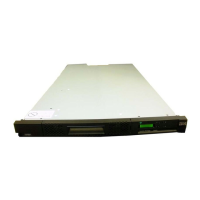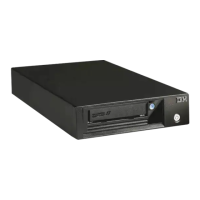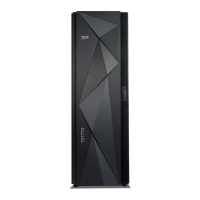The cable connections between each drive and each server are housed in a patch
panel that is located at the rear of the base frame or at the rear of any expansion
frame that contains drives.
Supported topologies
This section discusses the ways that the Fibre Channel drives in the TS3500 Tape
Library connect to other Fibre Channel end points.
Fibre Channel devices (such as the TS3500 Tape Library and a server) are known
as nodes and have at least one port through which to receive and send data. The
collection of components that connect two or more nodes is called a topology. Fibre
Channel systems consist solely of two components: nodes with ports and
topologies.
Each port uses a pair of fibers: one fiber carries data into the port, and the other
carries data out of the port. The fibers in the channel are optical strands. The fiber
pair is called a link and is part of the topology. Data is transmitted over the links in
units known as frames. A frame contains an address identifier that gives the fabric
and node for which the frame is destined.
The TS3500 Tape Library can be attached in a two-node configuration, either
directly to a switch as a public device (switched fabric) or directly to a host bus
adapter (HBA) as a private device (direct connection). Depending on whether it
has been attached through an Ultrium 1 tape drive (as an L_port), attached
through 3592 tape drives or Ultrium 2 and newer tape drives (as any supported
topology), or configured by using vital product data (VPD) settings, the library
automatically configures to an L_port or an N_port when it boots. The type of
connection also depends on whether the drive recognizes the connection as a loop
or a fabric connection:
v An L_port supports a Fibre Channel Arbitrated Loop connection to an L_port or
FL_port.
v An N_port supports direct connection to an F_port (for example, a director-class
switch) in a fabric topology.
Regardless of the port to which you connect the drive, it automatically configures
to a public device (through an F_port or FL_port to a switch) or to a private device
(through an L_port by using direct attachment to a server).
The TS3500 Tape Library supports two topologies: two-node switched fabric and
two-node direct connection. Table 63 on page 202 lists the topologies in which the
library can operate, the Fibre Channel server connections that are available, and
the port (NL, N, FL, or F) through which communication must occur. The sections
that follow describe each topology.
Chapter 6. Using the Fibre Channel interface 201
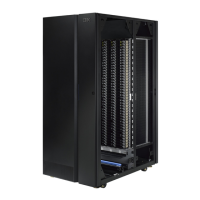
